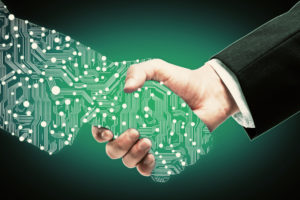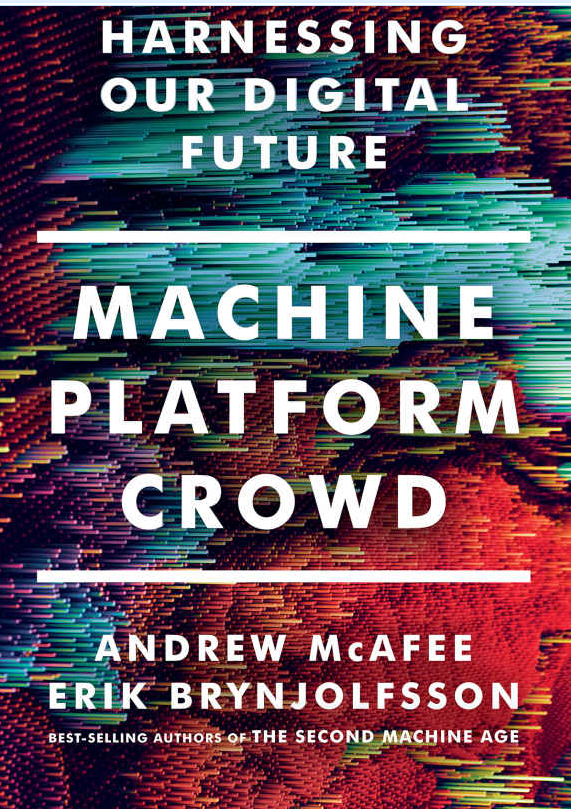
How to Survive Tech’s Chaotic Transformation

(Peshkova/Shutterstock)
Are you nervous about the pace of technological change? If you’re running a profitable business, and would like to keep it that way, you should be worried about being out-innovated by a nimbler startup leveraging the latest tech. However, while machine learning and AI will play a major role in separating the winners from the losers, it won’t be the only factor at play, according to a pair of MIT researchers.
It’s hard to overstate the advances being made in the world of data science, which is closely linked to AI and is ultimately the source of many of the digital transformations occurring right now. During his keynote address at the Dataworks Summit earlier this month, Hortonworks CEO Rob Bearden said data science will be “the transformational next leg of the journey” for everybody.
“That’s really the game changer in my mind,” Bearden said. “[Data science] is what companies are going to need in order to have a very strategic approach to turn data into value and…give them a highly differentiated competitive advantage.”
It’s data science that’s making a new generation of products and services –like self-driving cars, voice-activated customer assistants, and real-time fraud detection – actually possible. “Data science will be the method … to get transformational value from” data, Bearden said.
You won’t get an argument on that from MIT professor Erik Brynjolfsson, who co-wrote a new book, “Machine, Platform, Crowd: Harnessing our Digital Future” with MIT scientist Andrew McAfee.
“We think we’re in the early stages of a real revolution that’s happening in our economy driven by digital technologies,” Brynjolfsson said earlier this week in an interview by journalist Rebecca Knight for the MIT Sloan School of Management. “You see this chaos out there with big companies collapsing and new ones seemingly coming out of nowhere, and it seems like there’s no rhyme or reason to it. But it turns out that there are some underlying principles behind those big changes.”

MIT professor Erik Brynjolfsson (left) co-wrote “Machine, Platform, Crowd: Harnessing our Digital Future” with MIT scientist Andrew McAfee (right)
The central thrust of Brynjolfsson and McAfee’s new book – which is a follow-up to their first book, the bestseller “The Second Machine Age” – is that successful businesses need to understand what the new forces are, and how to harness the new capabilities and opportunities that they’ve unleashed.
“The single big idea in the book is that technology rewrites the business playbook,” McAfee says. “And if you continue to rely on a previous version of the business playbook, when technology has shifted things, you’re actually in a lot of trouble.”
It boils down to three recent advances in digital technology, which (perhaps not) coincidentally are also mentioned in the title of the book. Here’s the rundown on the changes you should know:
Machines Over Minds
Machines are taking on many of the responsibilities that we used to rely on humans to accomplish.
“For the very first time we’re able to build machines that are not limited by our own knowledge,” McAfee says in the interview. “The reason why we call programing ‘coding’ is that in the old days we’d encoded our knowledge in the software, and then we let that software go do its thing. We still do that. It’s still a really valuable thing to do.
“In addition though,” he continues, “we’re now able to build these machine learning systems where, to oversimply by a huge amount, you just show it a huge number of examples of what you’re interested in, and the systems we have today can essentially go, ‘Yeah, okay, I’ve got it from here.'”
Platform Over Products
The most successful companies today offer broad digital platforms, as opposed to individual products. That shift is due in part to some unique properties of things made up of binary bits as opposed to actual matter, Brynjolfsson argues.
Specifically, binary goods can be manufactured, or replicated, in such a manner that they’re essentially free, are perfectly indistinguishable from the original, and delivered anywhere on the globe instantly.
“Free, perfect, and instant are standard for digital goods, but it’s not something we saw with ordinary good and services, things made of atoms or labor,” Brynjolfsson says. “But they have very different economics. They tend to lead to winner-take-all or winner-take-most economics. Five out of five of the most valuable companies on the planet today are platform companies.”
Crowd Over Core
The Internet has unleashed wisdom of the crowd, and the smartest companies are tapping into that newfound source of knowledge.

GE’s nugget ice maker has an MSRP of $2,999
A good example of the power of crowdsourcing is how General Electric went about researching and designing a fancy new in-home icemaker (if you’re unfamiliar with the magic of nugget ice, click here).
Instead of convening a team of internal GE engineers to design the new machine, ramping up full factory production, and then backing it with a multi-million dollar ad campaign, GE crowdsourced the design, manufacturing, and distribution of the ice maker over the Internet. “We talk about it as ‘tapping the global brain,'” Beth Comstock, a vice president with GE, says in the MIT Sloan video. “The world is getting smarter. You can find brainpower you couldn’t find before.”
McAfee agrees. “As enthusiastic and impressed as I am by machine learning, which is astonishing, the ability to tap into the actual billions of brains out there in the world for first time in human history and get these under-recognized geniuses to work on our tough problems — I think it’s impossible to overestimate [the importance of] that.”
Tapping into crowd intelligence also enables faster decision making. “The right way [to make a decision] is to experiment, to test,” Brynjolfsson says. “No human expert is going to be as good as the crowd or doing real-time experiments.”
But Balance Still Needed
The forces of machines, platforms, and crowds are powerful, but alas, one should not get carried away with relying on them to the detriment of anything else. They should be harnessed with an eye toward balance, the MIT researchers say.

The authors’ new book went on sale this week
“Get your quant skills where they need to be but don’t ignore the socials skills,” McAfee says. “In particular the jobs that require higher level inter-personal skills, like negotiation, persuasion, coordination, motivation — the evidence is really clear: the robots are lousy at that. Those are highly valued skills. Those are great ones for people to work on.”
Research shows that people who master these social skills earn higher salaries, according to Alex “Sandy” Pentland, who heads up the MIT Human Dynamics Lab. “The jobs that pay the best and are in most demand are the connector jobs,” he says in MIT Sloan’s video. “They’re the ones who connect people in different situations to exploit opportunities. So it’s the entrepreneur, or a good sales guy.”
Those jobs are not easily automated by machines because they require insight into inter-personal relationships. “It’s a very human-centric, very human-insight type of a thing, and it’s incredibly dynamic. It changes all the time,” Pentland continues. “And the one thing that machine learning is really, really bad it is new stuff.”
Robots backed by AI will take some jobs from humans, but not all of them. What’s more, winning business models will require some flexibility. “People think we have to swing one way or another with all of our interactions. I don’t think that’s the case at all,” McAfee says. “Some of us are going to choose to have a more virtualized, fewer-humans-in-the-loop experience, and some of us are going to choose to have more humans in the loop.”
The most successful companies will mix and match these three forces for greatest effect. “Even though we describe them in each of these three sections, a lot of successful companies….combine them in different ways,” Brynjolfsson says. “They use a platform to reach to the crowd and then they use that to improve their machine algorithm. So you don’t have to make a sharp distinction. It’s not either or.”
Related Items:
Why Big Data and Data Scientists Are Overrated
Data Science Skills Gap May Be Narrowing






























